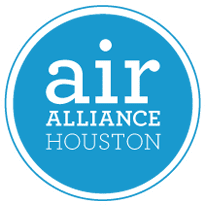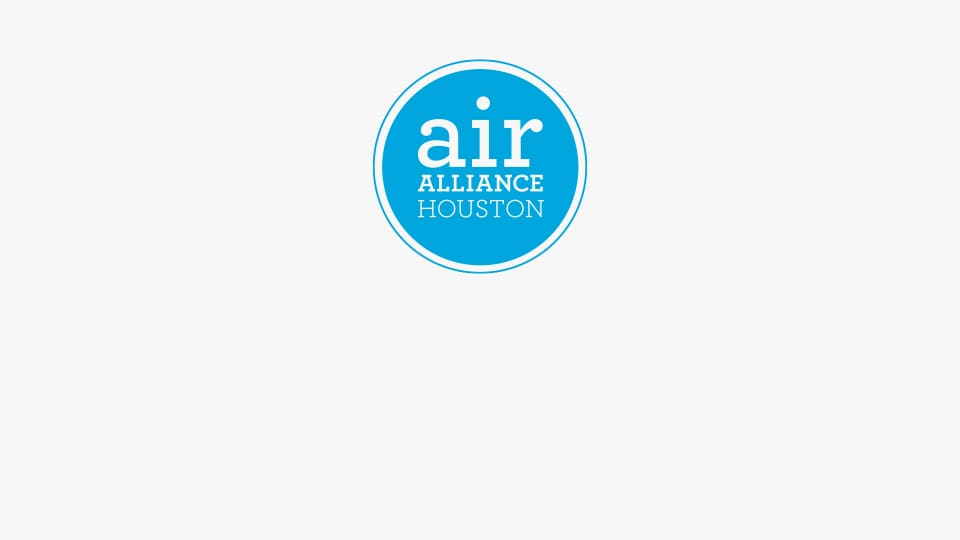FOR IMMEDIATE RELEASE:
Media contact: Riikka Pohjankoski, Communications Manager, Air Alliance Houston, riikka@airalliancehouston.org | 713.528.3779
Organizations pressure EPA, TCEQ, and other Region 6 state agencies to inform communities about increased risk of cancer from ethylene oxide
The groups respond to a new EPA Watchdog Report revealing a failure to communicate ethylene oxide risks to the most vulnerable populations, including in Texas and Louisiana.
Houston (April 8, 2020) – A group of community and environmental organizations sent a letter to the Environmental Protection Agency’s (EPA) Administrator Andrew Wheeler today requesting information about how EPA Region 6 – covering Texas, Louisiana, New Mexico, Oklahoma, and Arkansas – and its state environmental agencies plan to notify communities about increased cancer risk associated with ethylene oxide exposure. The letter was sent in response to the recently released EPA Inspector General’s (IG) report, which found that the EPA has failed to warn the majority of highly vulnerable communities about their elevated cancer risks from ethylene oxide emissions, even though the need to do so was recognized nearly two years ago.
“The EPA and TCEQ [Texas Commission on Environmental Quality] are neglecting their duty to protect and inform these communities through their inaction. These agencies have a responsibility to communicate the potential health hazards to residents and to develop an action plan to reduce these risks as soon as is feasible,” said Dr. Bakeyah Nelson, Executive Director of Air Alliance Houston.
Co-signers of the letter included Patricia Gonzalez, Director, Caring for Pasadena Communities; Anne Rolfes, Founding Director of the Louisiana Bucket Brigade; Dr. Robert Bullard, Director, HBCU Climate Change Consortium; Dr. Elena Craft, Senior Director for Climate and Health, Environmental Defense Fund; Eric Schaeffer, Executive Director, Environmental Integrity Project; and 15 others (see below).
The organizations say the decision by Region 6 to let state agencies take the lead in informing communities is troubling, given that in Texas, where the most ethylene oxide facilities are located, the TCEQ has been actively engaged in an effort to discredit the EPA’s cancer risk estimates for the chemical.
The groups also support the concerns raised from an analysis by Air Alliance Houston of EPA data, which found that the list of ethylene oxide-emitting facilities identified as “high priority” omits some of the heaviest emitters located in communities with significant ethylene oxide-attributable cancer risks.
“This oversight, coupled with general agency inaction, means that some of the most at-risk communities – some of which are located in the Houston area – are unable to actively participate in making informed decisions about their health,” the letter stated.
For a copy of the EPA Inspector General report, please click here.
The full text of the letter from Air Alliance Houston and partners is below:
Dear Administrator Wheeler,
In December of 2016, the US Environmental Protection Agency confirmed the industrial chemical ethylene oxide as a human carcinogen that, with chronic inhalation exposure, may result in an elevated risk of lymphoid and breast cancers. This designation means that the chemical potentially presents a much more significant risk to human health than previously assumed. Later, in the summer of 2018, the EPA released the 2014 National Air Toxics Assessment (2014 NATA) model of the estimated risk of air toxic exposure based on 2014 emission rates, which included the more severe estimated cancer risk of ethylene oxide. The 2014 NATA model identified high risk communities throughout the country that may experience disproportionate and elevated rates of exposure risk from ethylene oxide emissions as a result of their proximity to certain industrial emission sources.
Last week, in the midst of the growing coronavirus pandemic, the EPA’s internal watchdog, the Office of Inspector General (OIG), released a report highlighting the seeming reluctance of many regional EPA offices to engage in outreach to notify at-risk communities amid the ongoing chronic environmental health risk from ethylene oxide. The report identified at least 25 facilities throughout the country as the source of emissions that may increase the risk of certain cancers to unacceptable levels in nearby residential communities. These facilities include certain commercial medical sterilization facilities and organic chemical manufacturing plants. Since the identification of these 25 allegedly “high-priority” facilities, however, the EPA and/or state environmental personnel have met with residents in only nine of the 25 communities that may be potentially impacted by these industries.
The EPA’s mission statement includes a commitment to ensure that “all parts of society… have access to accurate information sufficient to effectively participate in managing human health and environmental risks.” It is therefore the responsibility of the EPA to coordinate the communication of the risks of ethylene oxide emissions to the communities that have been identified as most at risk.
The EPA’s strategy for notifying affected members of the public seems to vary widely according to EPA regional office jurisdiction, and few regional offices seem to have engaged in agency-initiated, proactive outreach to communities. The first public meetings were held by EPA’s Region 4 office in Georgia nearly a year after the EPA modeling identified areas of elevated risk, and the meetings were requested by residents rather than initiated by the EPA. Since then, some EPA regional offices, with apparent reluctance, have begun to reach out to the communities in many affected areas and others are planning to do so. However, the EPA Region 6 office – which covers Texas, Louisiana, New Mexico, Oklahoma, and Arkansas – has proposed to let the state environmental agencies take the lead in informing communities about the health risks from ethylene oxide emissions. However, our state agency, the Texas Commission for Environmental Quality (TCEQ) has yet to provide a time frame for this outreach to take place despite the fact that EPA’s analysis was released almost two years ago.
The proposal for a state-led outreach effort in Texas is a deeply troubling recommendation for an “action plan”. The TCEQ, the agency who would presumably lead the effort in our state, has been actively engaged in an effort to discredit the EPA’s cancer risk estimates for ethylene oxide. The TCEQ’s Toxicology, Risk Assessment, and Research Division, under the directorship of Dr. Michael Honeycutt, has even proposed state-level guidelines that could raise the permissible levels of ethylene oxide emissions for industrial air quality permits.
This is especially troubling because more ethylene oxide emitting facilities are located in Texas than in any other state. According to EPA’s 2018 Toxic Release Inventory (TRI), 25 industrial facilities in Texas alone are responsible for emitting around 157 thousand pounds of ethylene oxide emissions in just one year – or about 56.5% of the total ethylene oxide emissions for the United States in 2018. The next highest emitting state is neighboring Louisiana, which accounted for around 20% of national ethylene oxide emissions in 2018.
In addition, Air Alliance Houston’s own analysis of the 2014 NATA data has revealed that many at-risk communities with ethylene oxide-attributable cancer risks that significantly exceed the EPA’s unacceptable risk rates were not identified in the data provided by EPA to the OIG, and the facilities that are responsible for these emissions – including some of the heaviest emitters – were omitted from the subsequent prioritization list. This oversight, coupled with general agency inaction, means that some of the most at-risk communities – some of which are located in the Houston area – are unable to actively participate in making informed decisions about their health and safety. Moreover, facilities in Texas are not being held accountable or being required to modify their operations to reduce the identified cancer-risk.
The EPA and state agencies are neglecting their duty to protect and inform these communities through their inaction and must begin coordinating public meetings as soon as is feasible to communicate the potential health hazards to residents and to develop an action plan to reduce these risks. Until those meetings can be scheduled, EPA and their state partners must evaluate the findings of the NATA 2014 model and conduct air monitoring surveillance and analysis as well as public health surveys in areas at the greatest risk for exposure to ethylene oxide. As we have seen in the unfolding coronavirus pandemic, the decisions taken now to protect public health can be measured in lives saved or lost.
As such, our organizations respectfully request additional information about TCEQ’s plans to conduct direct outreach efforts to inform residents living near high-priority facilities emitting ethylene oxide in Texas and Louisiana. Given that the EPA does not plan to conduct direct outreach in Region 6 and given that the health of thousands of people in Texas and Louisiana communities is at-risk from ethylene oxide emissions, our organizations would like answers to the following questions:
1) Given that EPA Region 6 has indicated that state agencies will take the lead about informing the public, what plans does TCEQ have to inform the public about the increased risk of cancer from ethylene oxide?
2) In the absence of state agencies conducting the appropriate outreach, what steps will EPA Region 6 take to ensure communities are notified?
3) Has TCEQ investigated why there was a spike in ethylene oxide emissions at the Equistar facility in 2011, and what steps (if any) did the company take to reduce them in subsequent years?
4) Moving forward, how will EPA and/or state agencies measure and monitor ethylene oxide emissions in communities impacted in EPA Region 6?
5) What actions will the state agencies take to reduce ethylene oxide emissions in the Houston Region?
We welcome the opportunity to speak with you about the actions state agencies and EPA Region 6 will take to address the elevated cancer risks from ethylene oxide emissions in EPA Region 6 communities.
Sincerely,
Bakeyah S. Nelson, PhD
Executive Director
Air Alliance Houston
John Beard
Executive Director
Port Arthur Community Action Network (“PA-CAN”)
Robert Bullard, PhD
Director
HBCU Climate Change Consortium
Reverend James Caldwell
Executive Director
Coalition of Community Organizations (COCO)
Neil Carman, PhD
Clean Air Program Director
Sierra Club’s Lone Star Chapter
Elena Craft, PhD
Senior Director for Climate and Health
Environmental Defense Fund
Iris Gonzalez
Director
Coalition for Environment, Equity, and Resilience (CEER)
Patricia Gonzalez
Director
Caring for Pasadena Communities
Cruz Hinojosa
Executive Director
Environmental Community Advocates of Galena Park (ECAGP)
Hilton Kelly
Executive Director
Community In-Power & Development Association Inc.
Jordan Macha
Executive Director
Bayou City Waterkeeper
Luke Metzger
Executive Director
Environment Texas
Bridgette Murray
Executive Director
Achieving Community Tasks Successfully (ACTS)
Genna Reed
Lead Science & Policy Analyst, Center for Science and Democracy
Union of Concerned Scientists
Anne Rolfes
Executive Director
Louisiana Bucket Brigade
Eric Schaeffer
Executive Director
Environmental Integrity Project
Robin Schneider
Executive Director
Texas Campaign for the Environment
Adrian Shelly
Executive Director
Public Citizen Texas
Joanie Steinhaus
Executive Director
Turtle Island Restoration Network (TIRN)
Vivian Stockman
Executive Director
OVEC-Ohio Valley Environmental Coalition
Jackie Young
Executive Director
Texas Health and Environment Alliance (THEA)
Cc: Sean O’Donnell, Office of Inspector General
Doug Benevento, Associate Deputy Administrator
Anne Idsal, Principal Deputy Assistant Administrator, Office of Air and Radiation
Larry Weinstock, Office of Air and Radiation
Loan Nguyen, Office of Enforcement and Compliance Assurance
Amanda Huff, Office of Chemical Safety and Pollution Prevention
Kurt Temple, External Civil Rights Compliance
Pamela Janifer, Office of Congressional & Intergovernmental Relations
Ken McQueen, EPA Region 6 Administrator
Gloria Vaughn, EPA Region 6, Environmental Justice
Jon Niermann, Commissioner, Texas Commission for Environmental Quality

